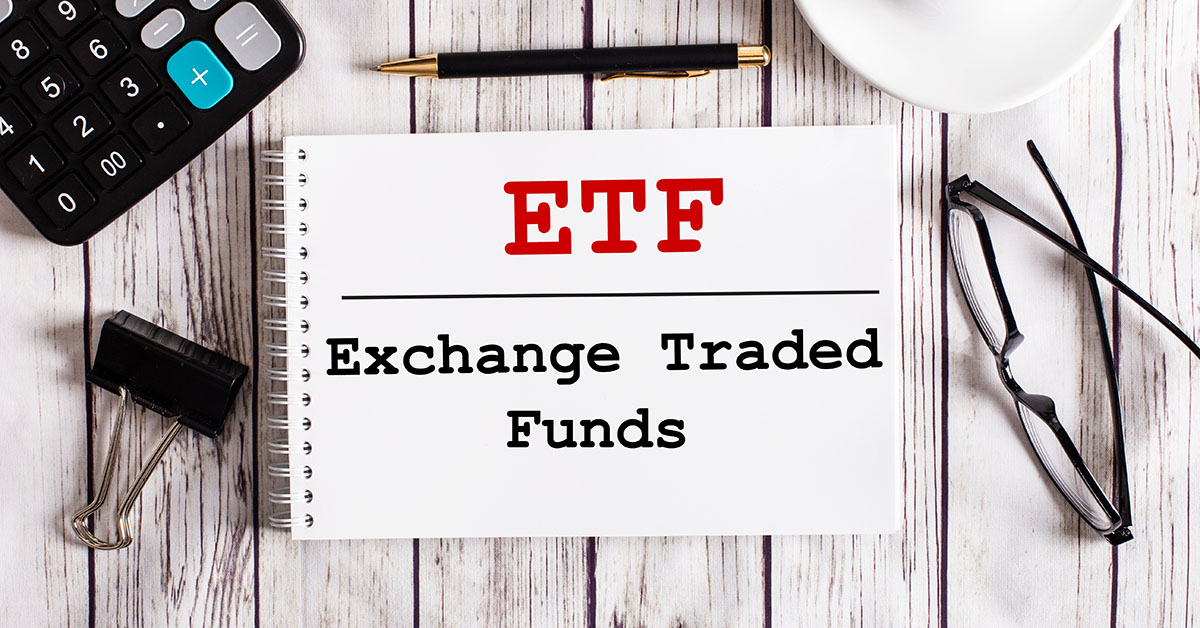The mutual fund as we know it will turn 100 on July 15th of next year, when the MFS Massachusetts Investors Trust A (ticker: MITTX) celebrates its centennial birthday. MITTX was the first open-end mutual fund, and it still exists, with $5.9 billion in total assets.
Morningstar benchmarks MITTX against the S&P 500, against which it has underperformed for the past week, month, half year, year-to-date, and 1, 3, 5, and 10-year periods. For the 10 years ending on October 4th, the fund has had a total return of 164.92% vs. 206.91% for the S&P 500. Part of that underperformance is due to its 0.7% Expense Ratio (70 basis points).
MITTX is not only the birthday child but, in many ways, the poster child for actively managed, open-end mutual funds. The mutual fund is a bit of a conundrum: how can an investing vehicle that is expensive, tax-inefficient, subject to legal but sneaky shenanigans, opaque, and noted for its underperformance versus its benchmarks, have nearly $25 trillion in assets under management?
This blog is intended to inform and educate investors about the inherent disadvantages of mutual funds relative to cheaper, more tax-efficient, more transparent, and more customizable investment vehicles that are widely available to virtually anyone.
Your Money for Nothing (Most of the Time)
A century ago, the mutual fund was a revolutionary breakthrough. Before the mutual fund, investing in stocks and bonds was only for the wealthy. The mutual fund offered an investor of modest means access to diversification, professional management, and easy liquidity, the holy trinity of money management. With mutual funds, regular people could come to the table; you no longer needed a ton of money and a white shoe broker with a seat on the New York Stock Exchange to get involved.
That holy trinity remains critical today and likely always will. Doing the research, building and managing the portfolio, and handling the sometimes frantic inflows and outflows in an organized and disciplined way is no easy task. But modern investing vehicles, like the Exchange Traded Fund (ETF) and the Separately Managed Account (SMA), offer investors far more flexibility and control, often for far less in costs and with near total transparency.
Investors taking a purely rational approach might ask themselves what are the most important decision inputs when determining which investment vehicles offer the best potential outcomes. If that rational investor began with gross return and then adjusted for risks, costs, diversification, and tax efficiency, the mutual fund would lose across the board to ETFs and/or SMAs.
It’s important to distinguish between investment vehicles and asset classes. For example, it’s reasonable to assume that domestic large-cap stocks will return about 10% per year over the long haul. Actual calendar returns for U.S. stocks are rarely anywhere near 10%, but the longer the period of time to inspect returns, the closer to that 10% average we would get. Different vehicles to access that return may be employed depending upon investment policy choices, and that’s where one might consider the actively managed mutual fund.
The simplest, lowest cost, and most certain way to get that expected return is via ETFs. However, an investor seeking alpha, meaning looking for more return than the index would provide, will need a portfolio that’s different from the market. By its nature, this introduces a new element of risk, known as non-systematic risk. It also introduces another layer of costs since active management requires more effort.
Before we drill down on any of the other criteria, we see already that actively managed mutual funds start with two disadvantages. One, they have higher costs, so simply equaling the index’s performance will require greater returns. And two, they need to have some special insight into stock selection—they need to be able to predict winners and losers. Unfortunately for investors in these mutual funds, these two hurdles often lead to underperformance.
We recommend you review our white paper, Mutual Funds: High Costs for Long Odds. In that paper, you’ll learn that over the 10 years that ended on December 31, 2021, 82% of fund managers fell short of their S&P 500 benchmark. It gets even worse: over the 15 years ending on that same date, 87% of them failed.
Despite paying much higher costs and taking on additional risk, the huge majority of funds underperformed. We’d say that the underperformance wasn’t despite those things; it was because of those things. But that is just the headline—things get a lot worse as we dig deeper.
Mutual fund companies are allowed to apply sales charges and set minimum investment amounts on different kinds of share classes. Typically, Class A shares have a front-end sales load, which can be 5%, but will have a lower annual expense ratio. Class B shares discourage liquidation by applying exit fees—you pay on the back end. Class C shares have higher expense ratios and often waive exit fees after one year.
These A, B, and C shares are called loaded funds and are typically sold through a broker or advisor, and the charges are compensation for the intermediary’s advice. Investors may obtain shares directly from a mutual fund without paying these sales and marketing charges. Some studies have shown that no-load funds tend to outperform loaded funds, which makes common sense.
According to thebalancemoney.com, the average no-load large-cap stock fund expense ratio in 2021 was 0.865%, or 86.5 basis points. So, even a relatively good deal comes with a high hurdle.
Taxes Make It All a Lot Worse
Mutual funds typically target the retail investor. That investor is far less likely to have a fiduciary advising them, let alone a fee-based advisor. In our experience, the wealthier the client, the more likely they are to have a fee-based fiduciary, and the less likely they are to own actively managed mutual funds. This is not simply due to high costs or underperformance; another big reason is the inherent tax inefficiencies of mutual funds.
The word “mutual” in mutual funds has a specific meaning. The owners of a mutual fund are all treated equally, directly proportional to their overall ownership of the fund. Mutual funds are governed by the Investment Company Act of 1940, and that law mandates that the mutual fund distribute at least 90% of its annual taxable income and 90% of its net tax-exempt interest income to its shareholders.
The owners of the mutual fund have zero control over the realization of gains and losses in their fund. That is entirely up to the manager. Virtually every day, investors buy and sell their mutual fund shares, either establishing a cost basis for the purchase or creating a profit or loss on the sale. This can lead to a terrible outcome known as “buying the distribution.”
Suppose you bought ABC mutual fund last January because you liked their ownership of Tesla, Amazon, and Apple. The fund has been purchasing shares of these stocks for many years, and some of those shares are way up. Now imagine the market has had a rough year, and all three stocks are down since you made your investment, and also imagine that the fund manager decides to sell out of the positions. This will realize a long-term capital gain that will be distributed to you at the end of the year despite your having lost money. Owing taxes on a loss sounds like exactly the type of thing you want to avoid.
Because only the manager of the fund can make buy and sell decisions, only they can ultimately determine the timing of realized losses and gains. You will have no opportunity to control short versus long-term tax strategies, and no ability to harvest losses. These are among the most important benefits of SMAs. But SMAs have other advantages as well.
The SMA Can Maximize an Investor’s Control
An SMA offers investors maximum transparency and flexibility. An investor can know precisely what they own at all times and can understand the rationale behind the buy decision. The investor may elect to avoid specific stocks for any reason. The holdings in an SMA can be located in the account type that makes the most sense. For example, dividend payers can be in an IRA, and growth stocks can be in a taxable account.
The SMA allows the investor to harvest losses against future realized gains. Say you own Tesla, and you’re committed to it for the long term. But say Tesla has a rough patch, and your shares are trading below your purchase price. You can sell now, realize the loss, and buy the shares back in 31 days. You have banked or harvested a loss. If you like, in the interim, you can purchase a different stock but one that moves very closely in step with Tesla to capture the market movement during the 30-day period.
SMAs also allow you, or your asset manager, to express what is known as conviction in your portfolio. Essentially, high conviction means that you will own a small number of stocks, say 20 to 40, that you intend to hold for several years or longer. Research has shown that managers who invest with high conviction significantly outperform those who do not.
It can be hard for a mutual fund manager to invest with high conviction for the simple reason that their incentive is to have as much money under management as possible. We can use MITTX to illustrate this. Suppose MITTX’s $5.9 billion were to have just 20 equally weighted positions; that would mean $295 million in each stock. If just 10% of MITTX were to turn over each year, that would mean $1.180 billion of trading volume—remember, each trade is a sell and a buy—each year. That amount of buying and selling can move markets and grind away at returns.
Now consider the class A shares of Growth Fund of America. As of October 4th, the fund had $273.2 billion in assets under management. Can it be a wonder that the fund also had 442 positions in it? That’s a recipe for high transactions and low conviction. If this interests you, we recommend the performance history of the fund; we think you’ll find the results unsurprising.
As we have said in many of our blogs, there is little that an investor can control, and this makes exercising control when and where you can all the more important. There are really only four things you can control: your costs, your tax efficiency, your diversification, and your risk exposure. With their failure to provide alpha, high costs, tax inefficiencies, over-diversification, and lack of transparency, mutual funds fail the objective test of value.
If you have mutual funds, you should consider an exit to ETFs and/or SMAs. We can help you gain more clarity into the situation and strategy with our Taxes First, Then Math analysis. It’s simple, easy, and free to order yours from our website.








